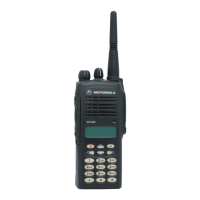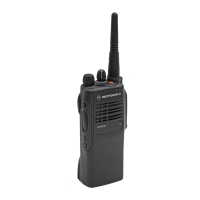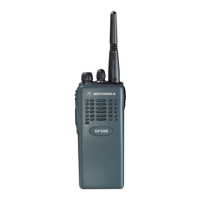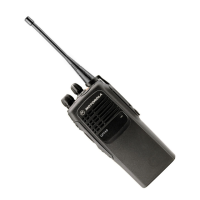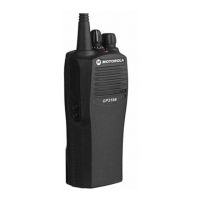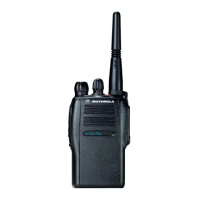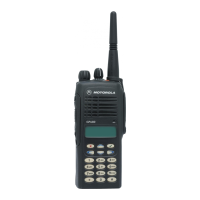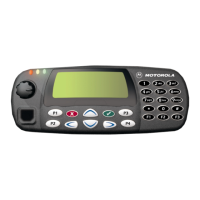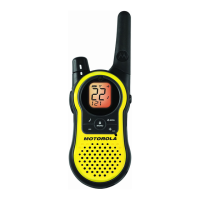Receiver 2-5
3.3 Automatic Gain Control Circuit
(Refer to the Receiver Front End and Receiver Back End schematic diagrams)
The front end automatic gain control circuit is to provide automatic gain reduction of the front end
RF amplifier via feedback. This action is necessary to prevent overloading of backend circuits. This
is achieved by drawing some of the output power from the RF amplifier’s output. At high radio
frequencies, capacitor C331 provides the low impedance path to ground for this purpose. CR308 is
a PIN diode used for switching the path on or off. A certain amount of forward biasing current is
needed to turn the PIN diode on. Transistors Q315 provides this current where upon saturation,
current will flow via R347, PIN diode, collector and emitter of Q315 and R319 before going to
ground. Q315 is an NPN transistor used for switching here. Maximum current flowing through the
PIN is mainly limited by the resistor R319.
Radio signal strength indicator, RSSI, a voltage signal, is used to drive Q315 to saturation hence
turning it on. RSSI is produced by U301 and is proportional to the gain of the RF amplifier and the
input RF signal power to the radio.
Resistor network at the input to the base of Q315 is scaled to turn on Q315, hence activating the
AGC, at certain RSSI levels. In order to turn on Q315, the voltage across the transistor’s base to
ground must be greater or equal to the voltage across R319, plus the base-emitter voltage (Vbe)
present at Q315. The resistor network with thermistor RT300 is capable of providing temperature
compensation to the AGC circuit, as RSSI generated by U301 is lower at cold temperatures
compared to normal operation at room temperature. Resistor R300 and capacitor C397 form an R-C
network used to dampen any transient instability while the AGC is turning on.

